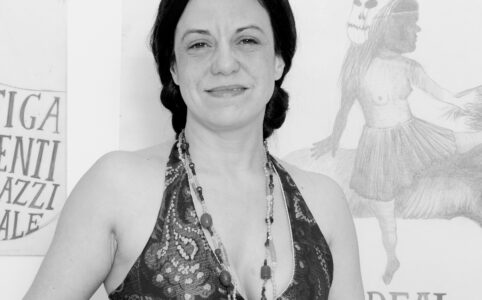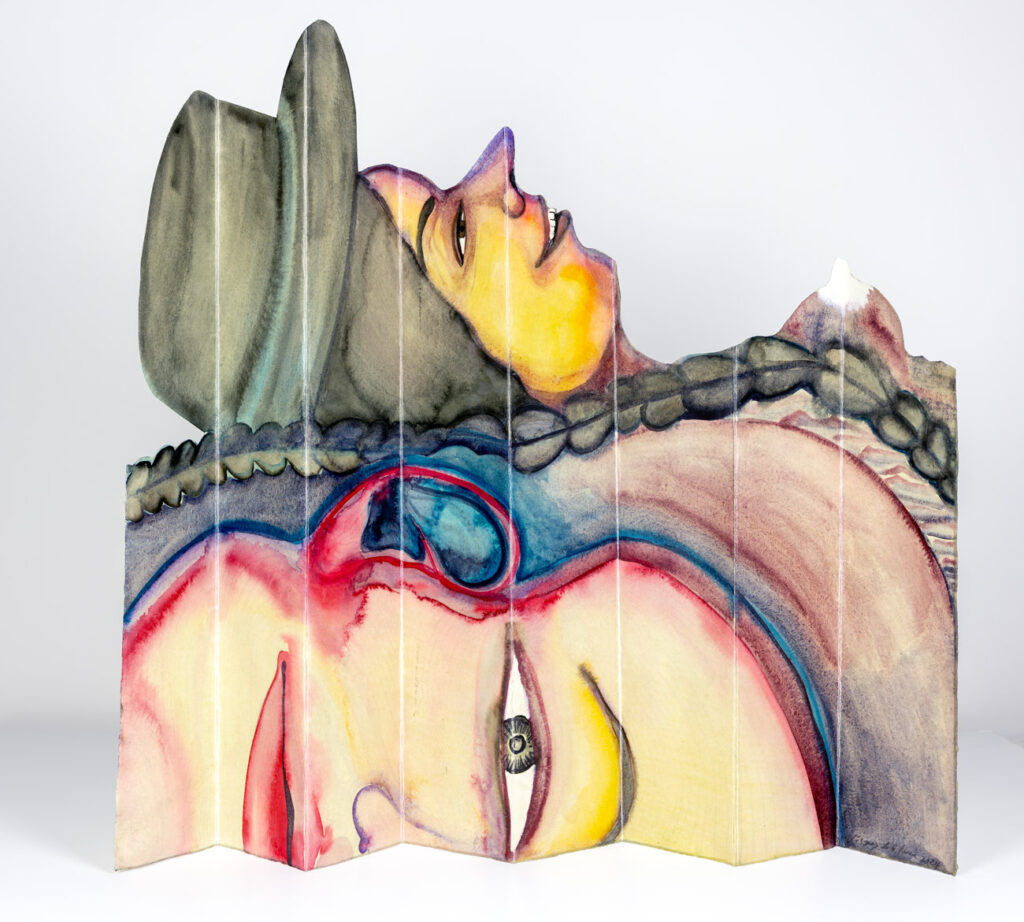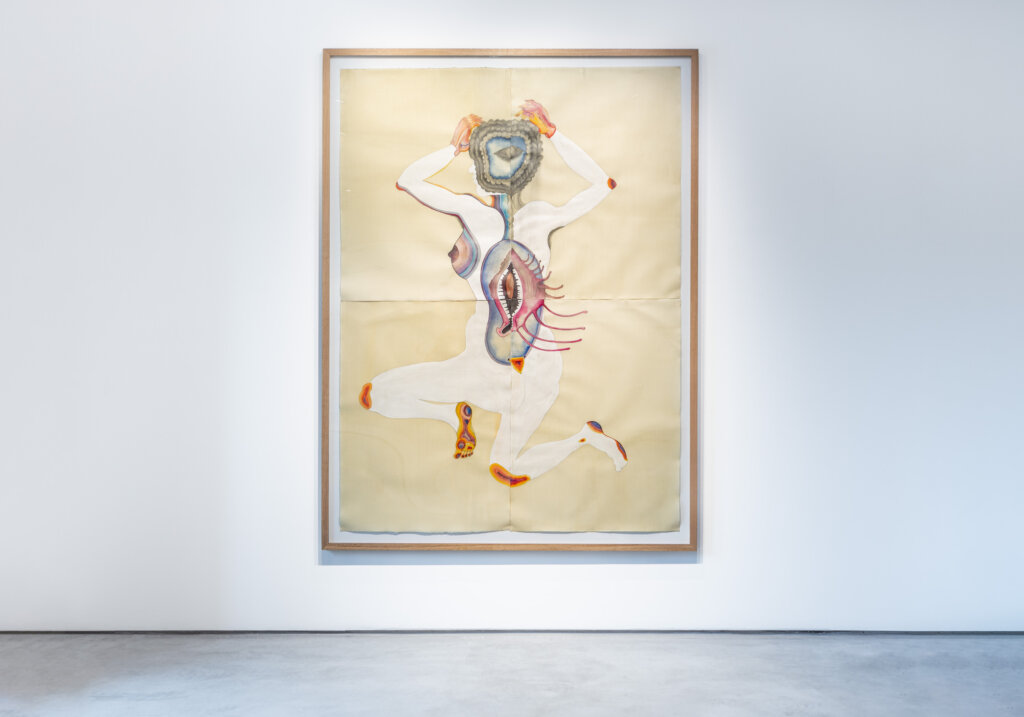In paintings, drawings and folded sculptural works, Sandra Vásquez de la Horra blends depictions of female figures with references to Indigenous and marginalised cultures, landscape and social taboos. Themes of trauma and healing are central to her artwork, which often reflects on identity and the interconnectedness of human beings and their natural surroundings.
Born in Viña del Mar, Vásquez de la Horra grew up during Pinochet’s military dictatorship and in the 1990s moved to Germany, where she studied at the Kunstakademie Düsseldorf and the Kunsthochschule für Medien, Cologne. Her images in graphite or watercolour often draw on symbols or characters from Central and South American cultures, such as the Santa Muerte, the vagina dentata or the goddess of Mother Earth, Pachamama.
Vásquez de la Horra often seals her works using molten beeswax, a process which evokes a religious connotation and adds a further layer of vulnerability to her chosen materials. On large folded works, the wax adds stability, turning paintings into free-standing sculptures. In this format, Vasquez de la Horra often depicts female bodies as colourful, strata-filled landscapes, pointing to her firm belief in the interdependence of body and environment: “We are not separated from Earth and Nature. Everything is inside us. We are rivers, Earth and Nature.”
In 2009 Vásquez de la Horra was awarded the Drawing Prize from the Daniel and Florence Guerlain Contemporary Art Foundation, and in 2021 she received the Hans Theo Richter Award, Sächsische Akademie der Künste. Her works featured in the Venice Biennale Exhibition 2022 and she won the inaugural Colección SOLO ARCO Acquisition Award in 2023. Numerous international collections hold work by Sandra Vásquez de la Horra, including The Art Institute of Chicago, Centre Pompidou Paris, MoMA New York, NGV Melbourne and Tate Modern, London.



